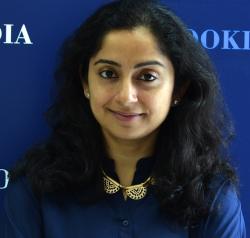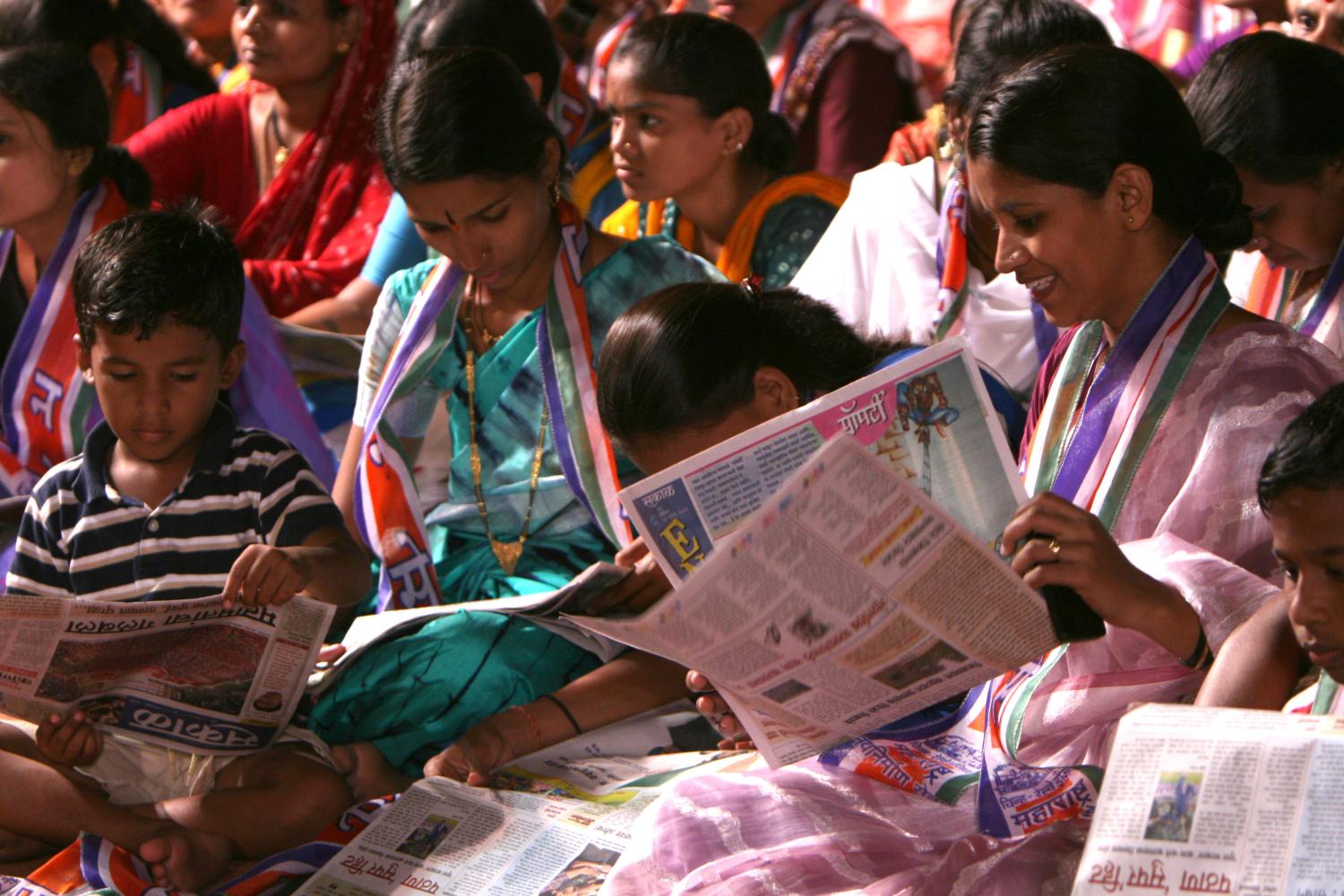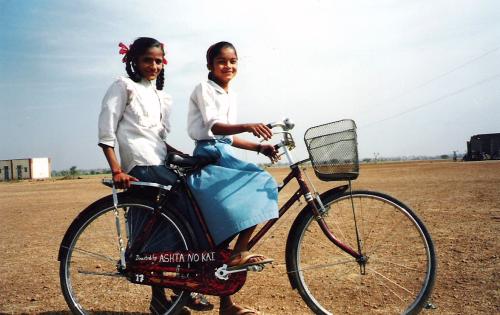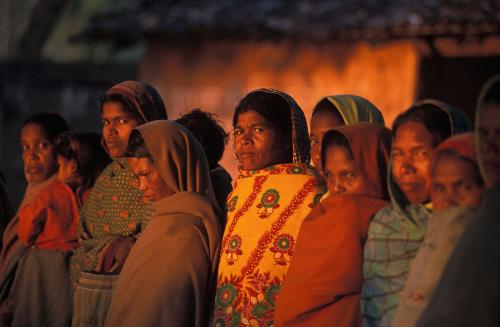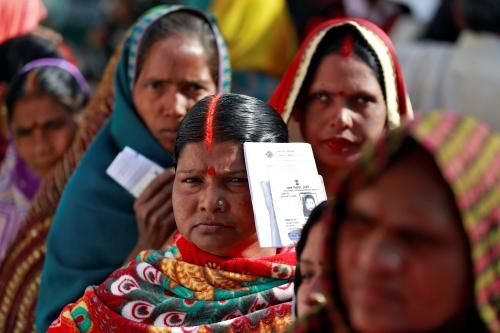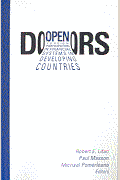Content from the Brookings Institution India Center is now archived. After seven years of an impactful partnership, as of September 11, 2020, Brookings India is now the Centre for Social and Economic Progress, an independent public policy institution based in India.
The views are of the author(s).
Forty-two years have passed since the United Nations first decided to commemorate March 8th as International Women’s Day, marking a historical transition in the feminist movement. Gender remains a critically important and largely ignored lens to view development issues across the world. On this past occasion of International Women’s Day 2017, here is an amalgamation of gendered learning outcomes across various crucial themes for public policy in India, emerging from Brookings India’s past research on political economy, financial inclusion and health.
Political Economy
In 2016, India ranked 130 out of 146 in the Gender Inequality Index released by the UNDP. It is evident that a stronger turn in political discourse is required, taking into consideration both public and private spaces. The normalization of intra-household violence is a huge detriment to the welfare of women. Crimes against women have doubled in the period between 1991 and 2011. NFHS data reports that 37 per cent of married women in India have experienced physical or sexual violence by a spouse while 40 per cent have experienced physical, sexual or emotional violence by a spouse. While current policy discourse recommends employment as a form of empowerment for women, data presents a disturbing correlation between female participation in labour force and their exposure to domestic violence. The NFHS-3 reports that women employed at any time in the past 12 months have a much higher prevalence of violence (39-40 per cent) than women who were not employed (29 per cent). The researchers advocate a multi-faceted approach to women’s empowerment beyond mere labour force participation, taking into consideration extra-household bargaining power.
Read more at: “Beginning a new conversation on Women”.
Gender inequality extends across various facets of society. Political participation is often perceived as a key factor to rectify this situation. However, gender bias extends to electoral politics and representative governance as well. The relative difference between male and female voters is the key to understanding gender inequality in politics. While the female voter turnout has been steadily increasing, the number of female candidates fielded by parties has not increased. More women contest as independents, which does not provide the cover for extraneous costs otherwise available when they are part of a political party.
However, women also act as agents of political change for other women. In the Bihar elections in 2005, when re-elections were held, the percentage of female voters had increased from 42.5 to 44.5 per cent while those of male voters declined from 50 to 47 per cent in the interim period of eight months. As a direct result, 37 per cent of the constituencies saw anti-incumbency voting. The average growth rate of women voters was nearly three times in those constituencies where there was a difference in the winning party. District-wise disaggregation of voter registration also supports this hypothesis in the case of Bihar indicating the percolation of the winds of change. This illustration proves that women are no longer under the complete control of the men in their family in terms of electoral participation. The situation is only bound to improve from here. With the introduction of Electronic Voting Machines (EVMs), vulnerable sections like women now have more freedom of choice in their vote. Further, poll related incidents of violence against women have significantly decreased since the phased introduction of EVMs across multi-level elections in India.
Read more at:
Extending the conversation to political representation is the next phase in the conversation. Women make up merely 22 per cent of lower houses in parliaments around the world and in India, this number is less than half at 10.8 per cent in the outgoing Lok Sabha. A steady increase in female voter participation has been observed across India, wherein the sex ratio of voters (number of female voters vis-à-vis male) has increased from 715 in the 1960s to 883 in the 2000s. Our studies have shown that women are more likely to contest elections in states with a skewed gender ratio. In the case of more developed states, they seek representation through voting leading to an increase in voter participation.
The situation can be rectified by providing focused reservation for those constituencies with a skewed sex ratio. Reducing the entry costs (largely non-pecuniary in nature – cultural barriers, lack of exposure) for women in order to create a pipeline of female leaders is another solution. These missing women, either as voters or leaders point to the gross negligence of women at all ages.
Read more at: Missing Women in Indian Democracy
Financial Inclusion
In the developing world, women have traditionally been the focus of efforts of financial inclusion. They have proved to be better borrowers (40 per cent of Grameen Bank’s clients were women in 1983. By 2000, the number had risen to 90 per cent) – largely attributed to the fact that they are less mobile as compared to men and more susceptible to peer pressure. However, institutions in microfinance are exposed to the trade-off between market growth and social development since having more female clients lead to the inevitable drip-down of social incentives. As an attempt to overcome this hurdle, a larger role can be played by donors with a gender driven agenda, for the financial inclusion sector will drive the idea further.
Gendered contextualisation of products is highly necessary for microfinance institutions (MFIs) – men and women do not ascribe to choices in a similar fashion. Trends emerging from prior research indicates that when health insurance coverage was held under the MFI sector, by both men and women, women benefited from the coverage only so far as they were the holders and not using spousal status (if their husbands were insured). Thus healthcare seeking behaviour becomes an important factor to be considered in insurance coverage under the MFIs.
The JAM trinity – Jan Dhan Yojana, Aadhar, Mobile – can be used to improve financial inclusion from a gender perspective as well. The metrics to consider would be the number of Jan Dhan accounts held by women, percentage of women holding Aadhar cards and access to mobile connectivity for women.
Read more at: A trade-off between Growth and Social Objectives Exists for Microfinance Institutions
Health
In terms of healthcare focusing on women, the Janani Suraksha Yojana (JSY) and National Health Mission are vital to the policy landscape. The JSY has improved maternal healthcare in India through the emphasis on institutional deliveries. Increase of 22 per cent in deliveries in government hospitals, was mirrored by an 8 per cent decline in childbirth at private hospitals and a 16 per cent decline in childbirth at home. The National Health Mission’s ASHA led to greater awareness and education of pregnant women as well as an increase in institutional maternal and neonatal healthcare. Improved infrastructure for maternal and neo-natal has been observed in community hospitals, in addition to the introduction of ambulance services.
A gendered increase in seek care is observed with a large 13 per cent increase in the number of women who report being sick in the last 15 days, driving the overall reportage. Further, an eight per cent decline in rural women seeking private healthcare, has been reported, while a 58 per cent increase in women seeking hospitalization has been reported. Further disaggregated, the data shows a 75.7 per cent increase for rural women seeking healthcare. The overall increase in usage of public hospitals is almost entirely driven by rural women who saw an increase of 24.6 per cent in utilisation of public hospitals over the 10 years (2004-2014). Our results show that the JSY had a significant, positive impact on overall hospitalisation of women in India. It increased the probability of a woman being hospitalised by approximately 1.3 per cent.
Read more at: Health and Morbidity in India
The healthcare sector in India has largely focused on maternal healthcare for women. The importance of research on mental health has been ignored in policy discourse. The significant relationship that mental health bears on violence has also been explored in further research. Every fifth suicide in India is that of a housewife (18 per cent overall) – the reportage of suicide deaths has been most consistent among housewives as a category, than other categories. India is the country with the largest rate of female deaths due to ‘intentional violence’.
Our work on childhood violence shows that girls are twice more likely to face sexual violence than boys before the age of 18. Larger the population of educated females in the country, lesser is the incidence of childhood violence at home – including lesser violent discipline, physical punishment as well as psychological aggression. Additionally, the lifetime experience of sexual violence by girls is strongly correlated with the adolescent fertility rate in a country. Further, a strong relationship is observed between female experience of sexual violence and female labour force participation within a country. The results show that the higher the labour force participation by women in a country, the higher is the incidence of sexual violence against them. This could be indicative of adverse working conditions within labour markets, and the difficulty of access to labour markets by young women in a country.
 Suicides in India by demographics
Suicides in India by demographics
 Prevalence of Violence against Children
Prevalence of Violence against Children
Read more at:
